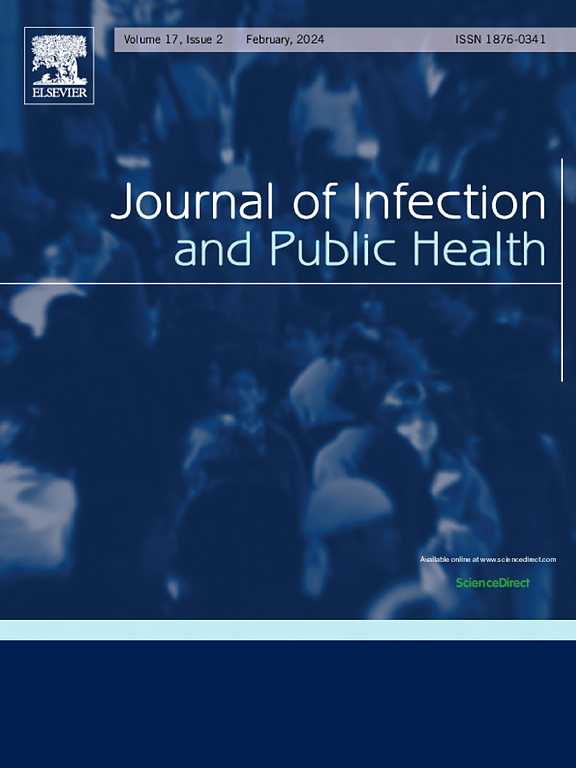Epidemiology and clinical outcomes in skin and soft tissue nontuberculous mycobacteria infections: A retrospective study
IF 4.7
3区 医学
Q1 INFECTIOUS DISEASES
引用次数: 0
Abstract
Background
Nontuberculous mycobacteria (NTM) are emerging pathogens responsible for increasing skin and soft tissue infections (SSTIs) globally. However, the diagnosis and treatment of NTM SSTIs face significant challenges due to the lack of standardized guidelines. This study reviewed the clinical characteristics, diagnostic challenges, and treatment outcomes of NTM SSTIs in a large cohort from a tertiary referral center in Beijing, China.
Methods
We retrospectively reviewed 142 patients diagnosed with NTM SSTIs at a tertiary hospital from 2014 to 2023. Data collected included clinical presentation, microbiologic and histopathologic findings, diagnostic methods, treatment regimens, and outcomes. The patients were categorized based on NTM species, and immunocompromised status.
Results
The cohort included patients with various NTM species, with M. marinum, M. avium complex (MAC), and M. abscessus complex (MABC) being the most common. The number of patients with NTM infections increased annually (p < 0.01). Fifty-four patients (38.0 %) were immunocompromised. The likelihood of immunosuppression was significantly higher in the MAC group (90.0 %, p = 0.02) and M. kansasii group (80.0 %). The highest proportion of sporotrichosis-pattern lesions was observed in M. marinum infections (p = 0.03). MAC primarily caused extracutaneous disseminated infections (p = 0.05), and immunosuppressed patients were more likely to have extracutaneous infections (79.6 %, p = 0.01). Of the 41 disseminated infection cases, 17.1 % had prior pulmonary NTM infections later disseminated to the skin and had a significantly worse prognosis (p < 0.01). Most misdiagnosed cases (82.6 %) were initially considered skin tuberculosis and bacterial infections. Amikacin was the most consistently effective antibiotic, while resistance to cefoxitin and imipenem was common in MABC and M. chelonae. The MABC strains exhibited 40 % resistance to clarithromycin. Drug side effects occurred in 30.3 % of patients, with 8.5 % switching medications due to adverse impacts. The longest treatment duration was in M. kansasii cases (371.4 days, p = 0.03). Immunosuppressed patients received more drugs (Mean ± SD: 3.0 ± 0.9 vs 2.8 ± 0.7, p = 0.02), whereas showed a nonsignificant trend toward longer treatment durations.
Conclusions
The study highlighted significant challenges in differentiating NTM infections from other conditions and managing their diverse clinical manifestations. Enhanced diagnostic tools and standardized treatment guidelines are essential to improve patient outcomes and manage the increasing burden of NTM SSTIs.
皮肤和软组织非结核分枝杆菌感染的流行病学和临床结果:一项回顾性研究。
背景:非结核分枝杆菌(NTM)是全球皮肤和软组织感染(SSTIs)增加的新兴病原体。然而,由于缺乏标准化的指南,NTM ssti的诊断和治疗面临着重大挑战。本研究回顾了来自中国北京某三级转诊中心的大型队列NTM ssti的临床特征、诊断挑战和治疗结果。方法:回顾性分析某三级医院2014年至2023年诊断为NTM SSTIs的142例患者。收集的资料包括临床表现、微生物学和组织病理学结果、诊断方法、治疗方案和结果。根据NTM的种类和免疫功能低下情况对患者进行分类。结果:该队列包括不同种类的NTM患者,以海洋分枝杆菌、鸟分枝杆菌复合体(MAC)和脓肿分枝杆菌复合体(MABC)最为常见。NTM感染患者的数量每年都在增加(p )结论:该研究强调了在区分NTM感染与其他疾病以及管理其多样化临床表现方面的重大挑战。改进的诊断工具和标准化的治疗指南对于改善患者预后和管理NTM性传播感染日益增加的负担至关重要。
本文章由计算机程序翻译,如有差异,请以英文原文为准。
求助全文
约1分钟内获得全文
求助全文
来源期刊

Journal of Infection and Public Health
PUBLIC, ENVIRONMENTAL & OCCUPATIONAL HEALTH -INFECTIOUS DISEASES
CiteScore
13.10
自引率
1.50%
发文量
203
审稿时长
96 days
期刊介绍:
The Journal of Infection and Public Health, first official journal of the Saudi Arabian Ministry of National Guard Health Affairs, King Saud Bin Abdulaziz University for Health Sciences and the Saudi Association for Public Health, aims to be the foremost scientific, peer-reviewed journal encompassing infection prevention and control, microbiology, infectious diseases, public health and the application of healthcare epidemiology to the evaluation of health outcomes. The point of view of the journal is that infection and public health are closely intertwined and that advances in one area will have positive consequences on the other.
The journal will be useful to all health professionals who are partners in the management of patients with communicable diseases, keeping them up to date. The journal is proud to have an international and diverse editorial board that will assist and facilitate the publication of articles that reflect a global view on infection control and public health, as well as emphasizing our focus on supporting the needs of public health practitioners.
It is our aim to improve healthcare by reducing risk of infection and related adverse outcomes by critical review, selection, and dissemination of new and relevant information in the field of infection control, public health and infectious diseases in all healthcare settings and the community.
 求助内容:
求助内容: 应助结果提醒方式:
应助结果提醒方式:


